Blogging has become one of the most popular ways to make money online in recent years, and fashion blogging is one of the most popular niches within the blogging world.
If you’re an aspiring fashion blogger passionate about fashion and want to share your style with the world, then you can start a fashion blog to make some extra income.
In this step-by-step guide, you will learn how to start a fashion blog and make money online.
You will learn everything to start a new fashion blog including choosing your fashion niche, creating a WordPress blog, writing blog posts, promotion & monetization.
By the end of this guide, you’ll have everything you need to have your very own fashion blog.
If you have any questions along the way, just drop a comment and I will help you out.
Let’s jump in!

How to Start a Fashion Blog in 7 Steps
- Define Your Fashion Blogging Goals
- Choose a Fashion Niche
- Pick & Register a Blog Domain Name
- Setup WordPress
- Write & Publish Blog Posts
- Promote Your Fashion Blog
- Monetize & Make Money
1. Define Your Fashion Blogging Goals
The first step to starting a fashion blog is to define your goals.
- What do you hope to achieve with your blog?
- Do you want to build an audience, make money, or both?
- How much time are you willing to commit to blogging?
Your answers to these questions will help determine the direction of your blog and how you can achieve your goals.
Some top fashion bloggers are content with having a small, dedicated following, while others want to grow their blog into a full-time business and make their mark in the fashion industry.
There’s nothing wrong with either approach. It just depends on what you’re looking for.
Your blogging goals will determine :
- How often do you publish new content
- What type of content you create
- How you promote your blog
- How you monetize your blog
If you’re not sure what your goals are, that’s okay. You can always revisit this step later and update your goals as needed.
What is a Fashion Blog?
A fashion blog is a blog that covers the latest trends in fashion, style, and beauty. Fashion bloggers share their personal style, write about new looks and collections, and provide tips on how to wear certain items.
A fashion blog can become a platform where people share their ideas and knowledge about the fashion world. If you are passionate about fashion and style, starting a blog can help you showcase your creativity, connect with like-minded individuals, and potentially earn money.
Why Start a Fashion Blog?
There are many reasons to start a fashion blog.
Some people do it to share their personal style with the world. Others use their blog as a way to connect with like-minded people.
And of course, some start a fashion blog to make money.
Your blog can help you become a fashion influencer. Fashion and style influencers get a lot of perks beyond just money.
Starting a blog can be a fun and rewarding experience, no matter your reason for doing it.
Not only can you express yourself creatively, but you can also connect with people from all over the world.
Plus, if you’re looking to make some extra income, there are plenty of ways to monetize your fashion blog.
Some benefits of starting a fashion blog include:
- Showcase your personal style
- Connect with like-minded people
- Share your fashion tips and advice
- Make money from your blog
If any of these benefits sound appealing to you, then starting a fashion blog might be the right choice.
How Much Money Can You Make from a Fashion Blog?
The median ad income of a fashion blog with 100 posts is $2815 per month. Income will depend on the number of articles you have published, the traffic your blog gets, and how well you monetize your blog. The fashion blog Fit Mommy in Heels made $11,562.19 in a single month.
2. Choose a Fashion Niche
The next step is to choose a specific fashion niche.
Your niche will determine your blog’s focus and target audience.
There are endless possibilities for choosing a fashion niche. But choosing the right niche is essential to your blog’s success.
Why choose a niche?
A niche allows you to focus your content and build an audience around a specific topic.
If you try to cover everything, you’ll end up with a scattered blog that appeals to no one. But if you focus on a specific niche, you can become the go-to source for that topic.
Finding Your Ideal Niche
Here are some factors to consider when choosing a fashion niche:
- What type of fashion do you like?
- What fashion do you know the most about?
- What do you think other people would be interested in?
- What type of fashion do you think is underserved?
- What fashion do you think is missing from the blogosphere?
Your answers to these questions will help you choose the perfect niche for your blog.
Here are some popular fashion niches to help you get inspiration for your own:
- Streetwear
- Vintage
- Luxury
- Athleisure
- Plus size
- Men’s fashion
- Kid’s fashion
- Sustainable fashion
- Modest fashion
- Boomer style
- Affordable fashion
- Celebrity fashion
- DIY fashion
- Ethical fashion
- Plus-size fashion
- Street style
Examples of Fashion Blogs
Looking at other top fashion blogs can inspire your own ideas. Here are some of the more popular fashion blogs:
1. Girls With Curves
This blog is for curvy and plus-size women. It’s written by Tanesha Awasthi, a plus-size model and fashion designer. The site covers a range of topics including fashion, beauty, lifestyle, and fitness.
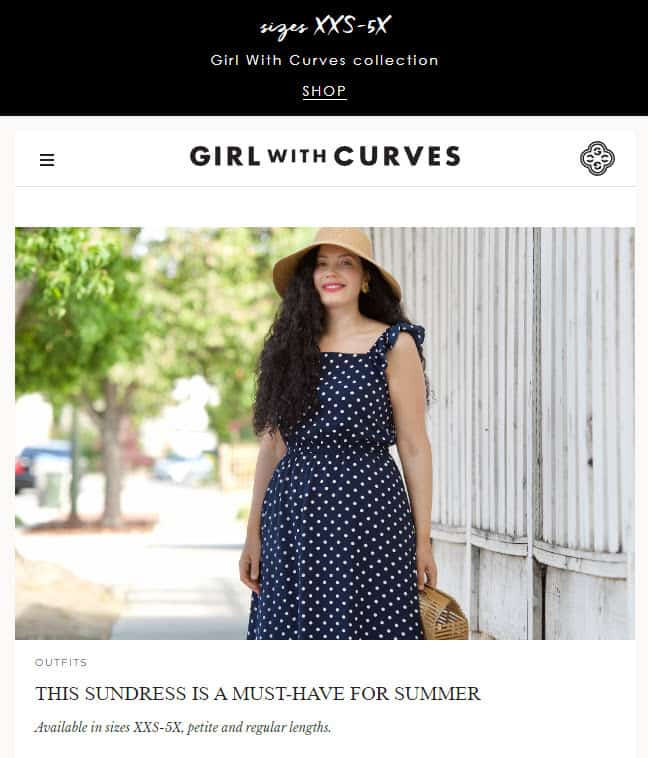
2. Fashion Beans
Fashion Beans is a men’s fashion blog covering the latest trends and styles. It includes articles on everything from streetwear to tailoring and provides tips on how to wear the latest trends.

3. Fashionista
This blog covers all things fashion. Nadia Boujarwah and Faran Krentcil founded it in 2007. It covers industry news, designer interviews, and trend reports.

4. College Fashion
College Fashion is a blog about fashion for college students, written by college students. The site includes articles on how to dress for different occasions, how to put together a stylish outfit on a budget, how to mix and match different pieces of clothing, and more.
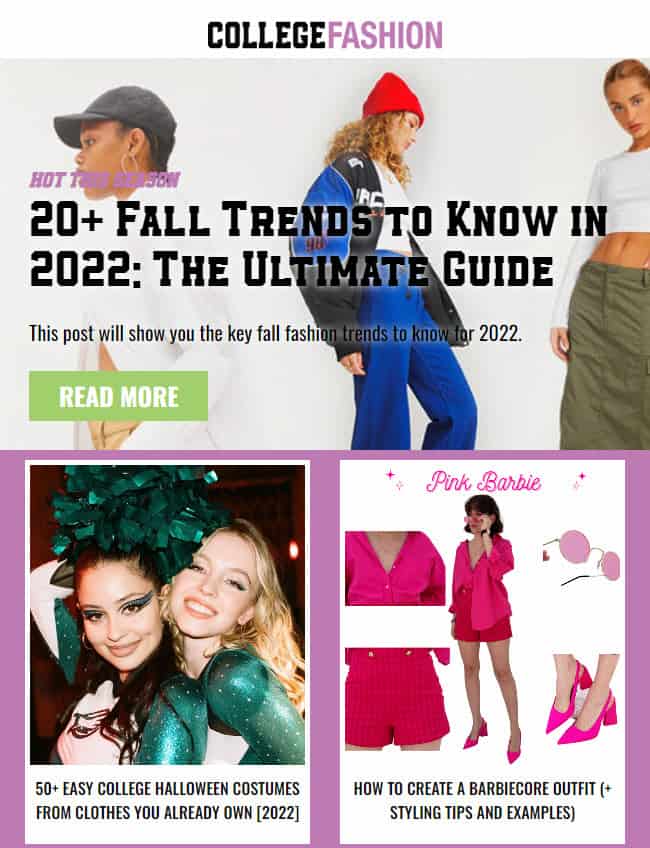
Check if Your Niche Is Profitable
Once you’ve chosen your niche, it’s important to make sure it is profitable.
The best way to do this is to check if there are already successful blogs in your niche.
If there are, then that’s a good sign that you can make money from your blog as well.
To find popular blogs in your niche, simply do a Google search for “[niche] + blog.” For example, if you’re interested in starting a luxury fashion blog, you would search for “luxury fashion blog.”
Another way to check if your niche is profitable is to see if there are magazines or websites devoted to that topic.
For example, if you’re interested in starting a men’s fashion blog, you would search for “men’s fashion magazine.”
If there are results, then that’s a good sign that there is an interest in that topic and you can make money from your blog.
3. Pick & Register a Blog Domain Name
After selecting your niche, brainstorm a few names for your fashion blog.
It’s recommended to keep your blog’s name to two words (e.g., Hello Fashion). One of the two words should be a keyword from your niche. The other word can be something that makes your website brandable. For example, our blog teaches people how to make passive income, so we have named it Passive Book.
Here are some words you can mix and match into your blog name:
- Fashion
- Curves
- Style
- Outfits
- Dressing
- Apparel
- Clothing
- Wear
- Glamour
- Attire
- Chic
- Trendy
Use a Business Name Generator to brainstorm the name of your fashion blog.
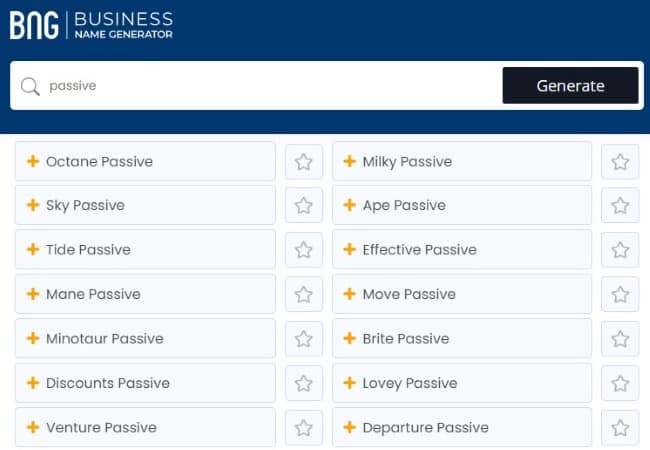
You can also use your own name for your blog. But if you ever plan to sell your website in the future, it is much more difficult to transfer your brand to the buyer when it is your name.
Check Domain Name Availability
After brainstorming names, check if the .com domain name is available.
Domain names are the addresses of websites. For example, the domain name of this website Passive Book is passivebook.com.
You must check if both the .com domain name and the social media handles are available. You can use Namechk to check the availability of both your domain name and social media handles.
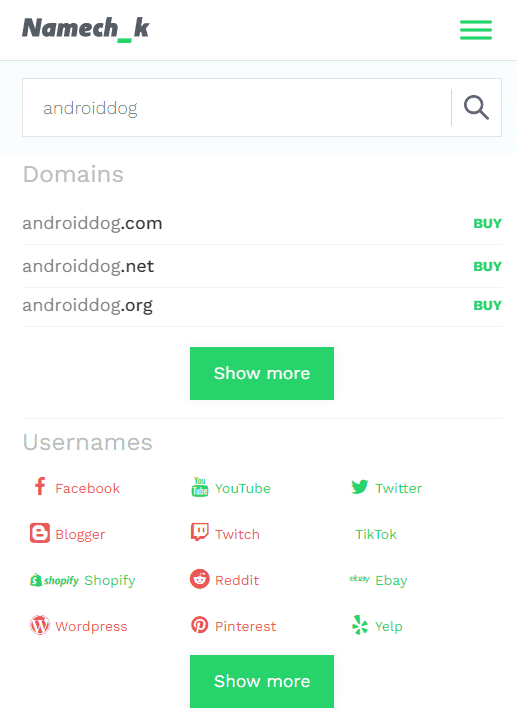
Here are a few things to keep in mind when selecting a domain name:
- Choose a .com domain name. 86% of the internet uses .com, so your visitors are likely to try visiting your blog by typing .com. Avoid other extensions like .net or .org.
- Don’t include hyphens and numbers.
- Do not use words with multiple spellings (for example colour vs color).
- Shorter domain names are better. Try to keep it under 12 characters.
- Spelling & Pronunciation should be easy and intuitive.
- It should be easy to remember.
- Avoid words that can be misread together. For example, therapistjohn.com can be read as Therapist John or The Rapist John.
- Make sure it’s not trademarked or copyrighted by someone else. The AI writing software Jarvis.ai had to rebrand to Jasper.ai because Marvel sued them for the Iron Man reference. Lawsuits will happen once your blog is established.

Register a Domain Name
Once you decide your domain name it is time to register it.
You should register your domain with NameCheap because you will get domain privacy for free. Other providers charge $12 per year for domain privacy. Without domain privacy, your name, home & email address will be accessible to the public.
Step 1: Go to NameCheap. Enter your domain name with the .com extension.

Step 2: Select the .com extension and click the Add to Cart button.
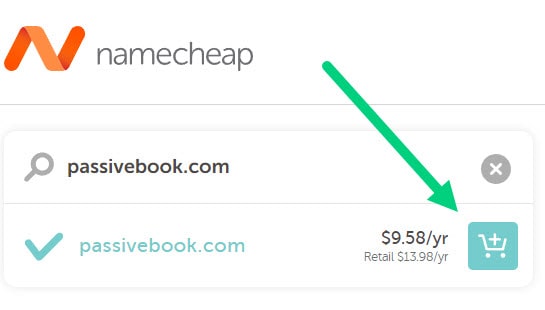
Step 3: After adding the domain to the cart, click on the Checkout button.
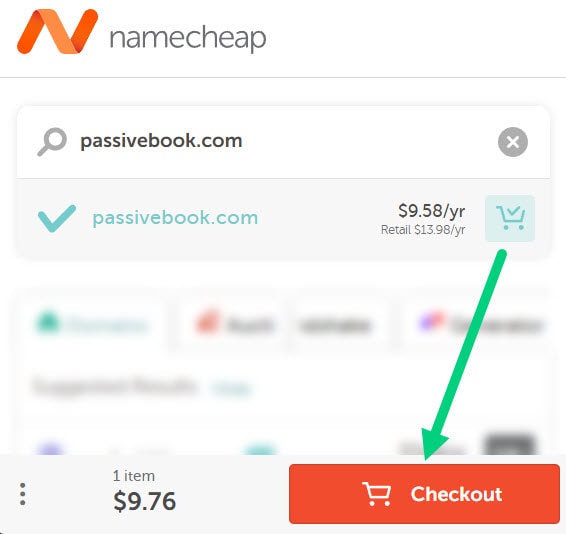
Step 4: Enable Domain Privacy that comes for free along with auto-renew. You don’t need any other paid addon.
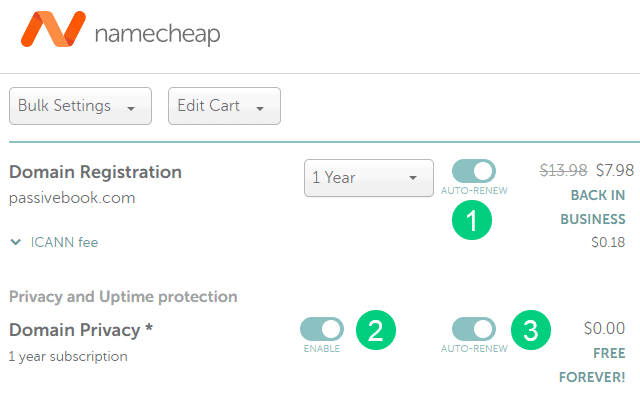
Step 5: Click on Confirm Order. Pay to complete your purchase.
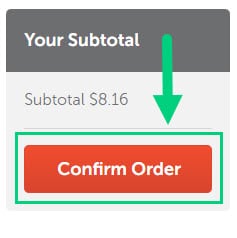
Step 6: Log in to Namecheap and click on Domain List ❶ in the left sidebar and then click Manage ❷ next to the domain you just purchased.
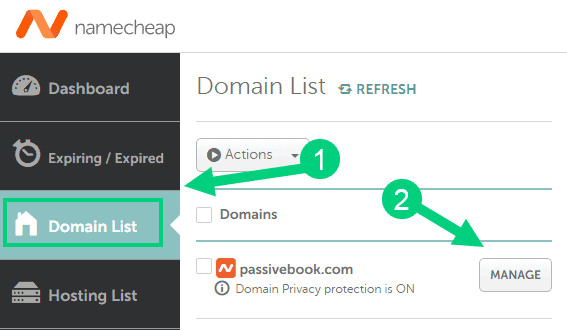
Step 7: Under the Nameservers section, select “Custom DNS” from the dropdown ❶. Then enter the following two nameservers ❷ ns1.bluehost.com and ns2.bluehost.com as shown in the image. Then click the green tick ❸ to save. If you use a hosting provider other than Bluehost, enter their nameserver values in this step instead.
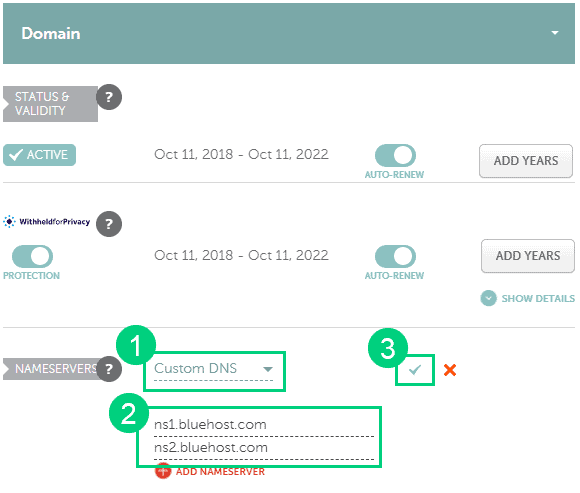
Can I get a free domain name?
Your web hosting provider might give you a free domain name for one year but they charge $12 for domain privacy which is free in Namecheap. From the second year, you will pay for both the domain and privacy which will cost you more than $20+. So it is cheaper to just register your domain with Namecheap from the beginning. Also using different companies for web hosting and domain registration will allow you to easily switch your blog host later without transferring domains.
Can I change the name of my blog later?
You will lose your search engine rankings if you change your blog’s name once it gets links from other websites. It will take as long as a year or more for you to regain the lost traffic. It is possible to mitigate problems by having proper redirects. But you will have to renew both your old and new domains every year. So try to avoid changing your blog’s name once it is established.
4. Setup WordPress
The next step is to get your blog up and running in WordPress. WordPress is a content management system (CMS) that makes it easy to create a fashion blog or website.
Why Choose WordPress.org?
There are many blogging platforms but the self-hosted wordpress.org powers 70% of blogs on the internet. 42% of all websites on the internet use WordPress as their content management system.
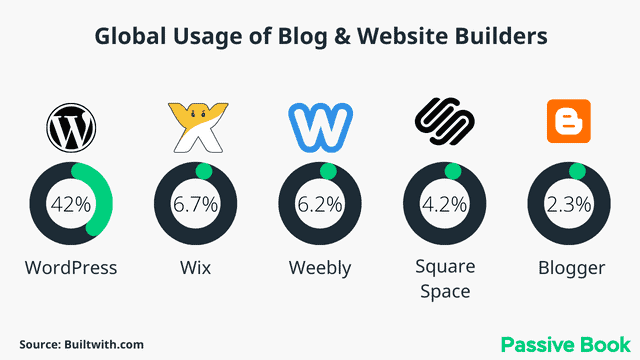
WordPress is open-source software released under the GPL. It is used by millions of people around the world including many large companies such as Facebook, Sony, Disney, The Guardian, Forbes, and The New York Times.
You own your website and data with WordPress.org. You can host your WordPress website on any hosting provider of your choice.
WordPress.org vs WordPress.com
There are two WordPress platforms: WordPress.org and WordPress.com.
WordPress.com is a commercial platform owned by Automattic, the company behind WordPress. It’s a great platform to get started with if you want to create a blog for free. But it has many limitations such as not being able to install plugins, not being able to use a custom domain name, and not having full control over your website.
WordPress.org is an open-source platform that you can download and install on your own web hosting account. It’s completely free to use. You have full control over your website and can install any plugin or theme of your choice.
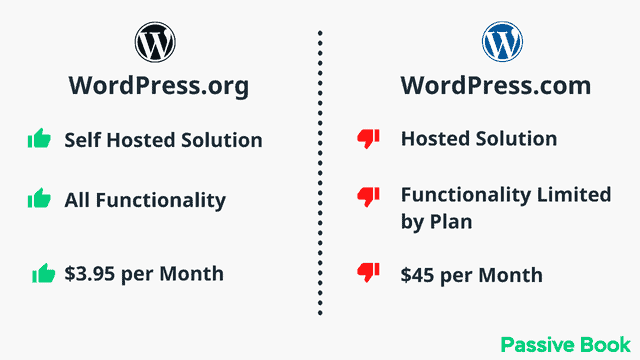
In this guide, we will be using WordPress.org to create our fashion blog.
Why Avoid Free Blogging Platforms
There are many free blogging platforms such as Blogger, Medium, Tumblr, and Wix. While they might be tempting to use because they are free, we don’t recommend using them for the following reasons:
You Don’t Own Your Data – If the platform decides to delete your blog, all your content will be gone with it. This is more common than you think and you will usually see the following screen.

Limited Functionality & Flexibility – You can not install plugins or themes on most of these platforms, which limits what you can do with your blog.
Not Search Engine Friendly – These platforms are not built with SEO in mind, making it difficult to rank high in search engines.
How much does it cost to start a fashion blog?
It will cost you $2.95 per month to host your WordPress fashion blog in Bluehost. A domain will cost you $12/year. So that is a total of $4.2 per month, which is less than the price of Netflix for all the unlimited features that a self-hosted WordPress blog has to offer.
What to do if you already have a free blog?
If you already have a blog on Blogger, Tumblr, Wix, or any other free platform, we recommend you migrate it to WordPress. You can use an import plugin to easily migrate your existing blog to WordPress.
Install WordPress in Hosting
To install WordPress you need hosting. Hosting is a service that stores your blog’s files on a remote server. This allows other people to view your blog by entering the domain name into their web browser.
For this guide, we will use BlueHost as our web host. It is a cheap hosting that is extremely easy for beginners to set up. If you use any other web host, the steps will be the same but the user interface may be slightly different.
1. Go to BlueHost using this link to get a special discount. Select WordPress > WordPress Hosting from the top menu.
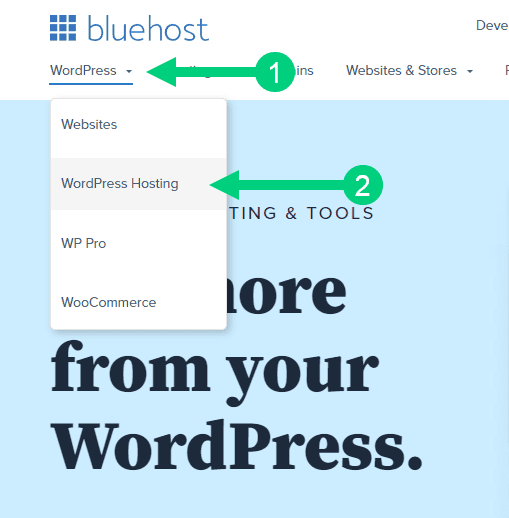
2. Click on the button you see on this page and you will be taken to the pricing section.
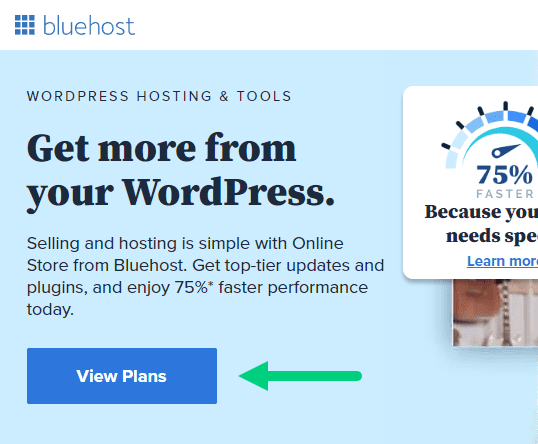
3. Select the Basic Plan. You can upgrade to a different hosting plan as you grow.

4. If you already have a domain name that you purchased with Namecheap you can put that in the “Use a domain you own” ❶ section. If you don’t have a domain name yet, choose the “Create a New Domain” ❷ to purchase a new domain.
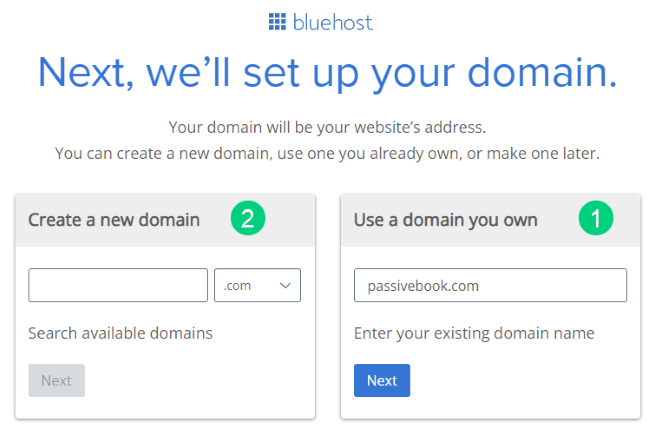
5. In the next screen, enter your information. Uncheck all package extras. If you purchase your domain through Bluehost instead of Namecheap, you may want to enable Domain Privacy. You won’t see the Domain Privacy option if you bought your domain through Namecheap. Namecheap will give you this Domain Privacy for free.
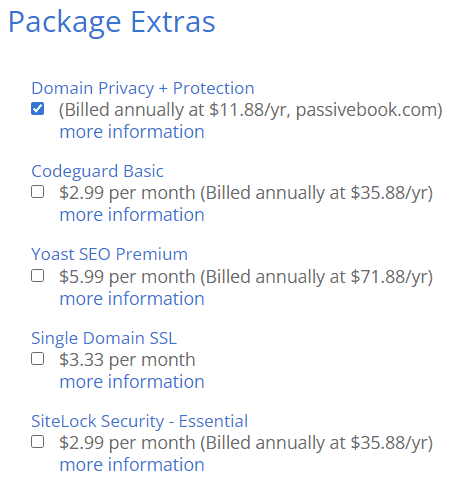
6. Once you have successfully paid, you will be prompted to set a password. Click on the “Create your Password” button.
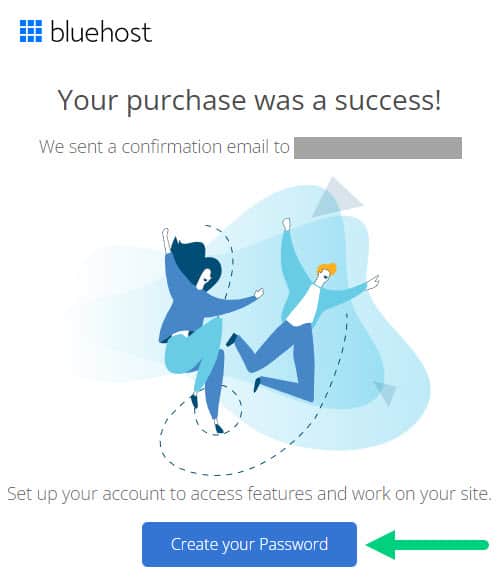
7. Enter your password and create your account. If you lose this password, you can reset it.
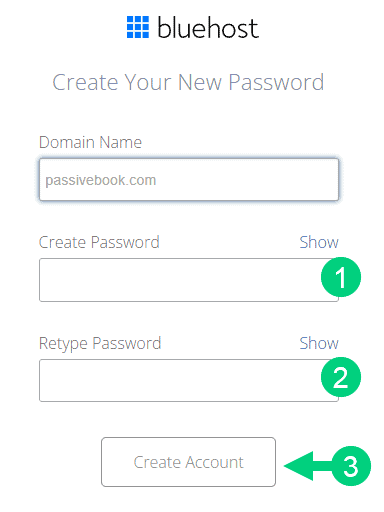
8. After you set your password, log in to Bluehost.
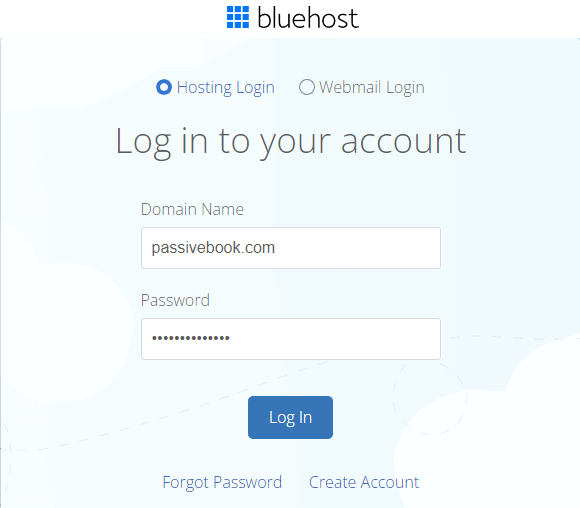
9. Click on the Create your website button on the following screen. This will start a Bluehost Wizard, just click Skip this step wherever possible.

10. On the following page, click “No help needed” or “Skip this step”. We don’t want Bluehost to limit our customization options.
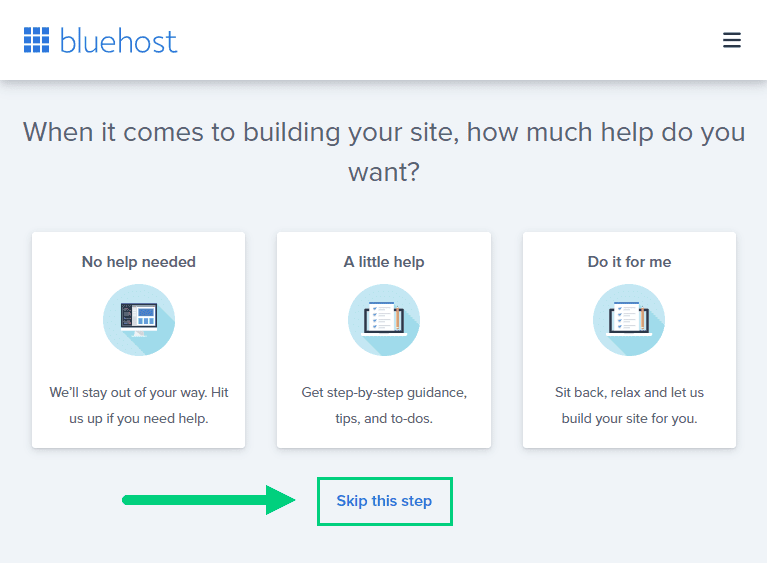
11. On the next page, you will be asked about the purpose of your website. You can choose from any of the available options.
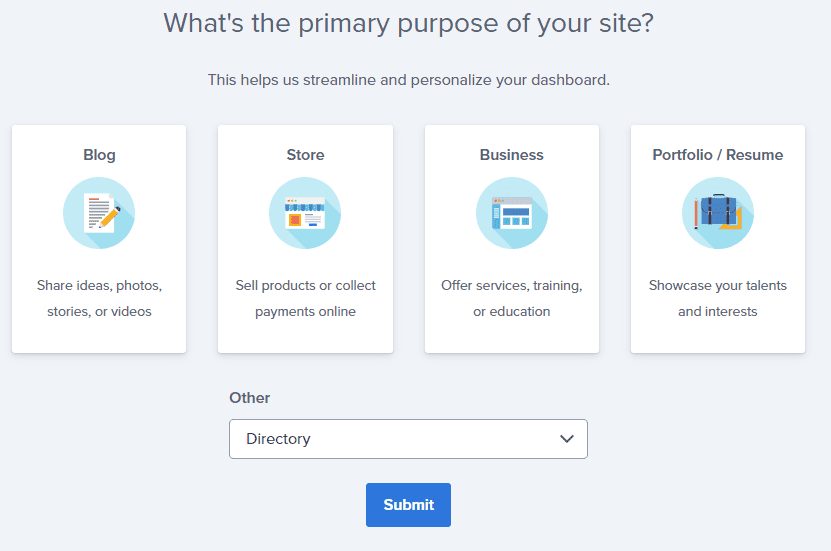
12. On the next page, click Skip this step.

13. On the following page, enter the blog’s name and tagline. You can change this later so feel free to click “Skip this step” or enter something as a placeholder and click Continue.
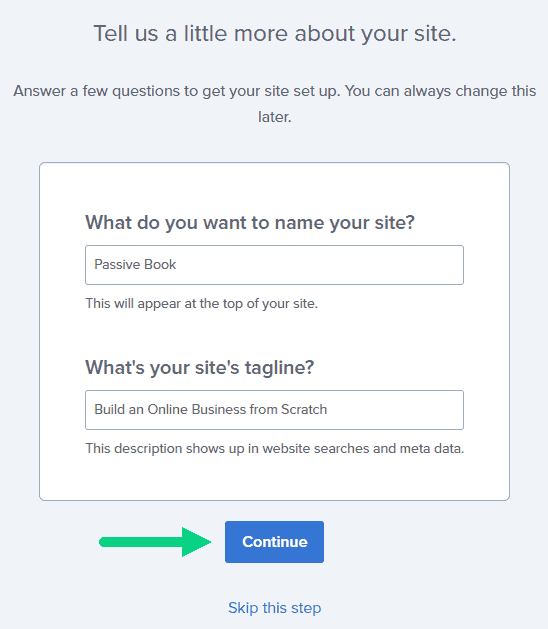
14. Finally you will be asked how you want to build your website. Choose “Limitless customization” to have all the options.

15. You can see your blog by going to yourdomain.com. Go to the Bluehost dashboard and click on the My Sites tab ❶ in the left sidebar and click on the “Manage site” button ❷.
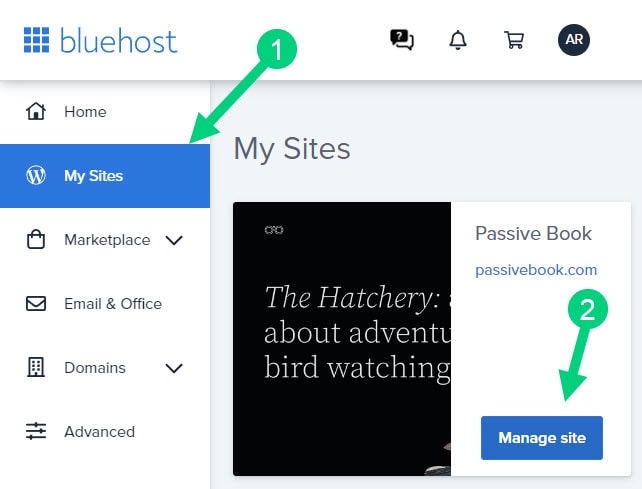
16. Your WordPress site has separate login credentials different from the ones you use to log into Bluehost. You can use this to log in to the WordPress dashboard directly without logging into Bluehost. To get this:
❶ Click on Users on top.
❷ You will be able to see your username and email that you can use to log in to WordPress.
❸ If you click on the three dots you will see the option to Reset your password. ❹
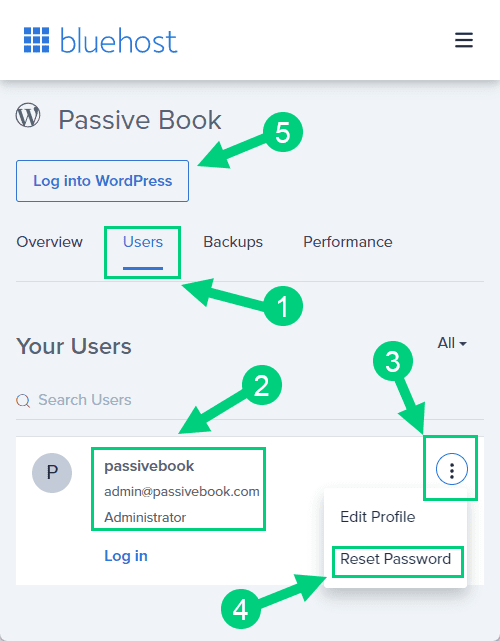
You can log into WordPress from the Bluehost dashboard by clicking the Log in to WordPress button ❺. But it is not recommended you rely on this as your primary login method because you will get locked out of your site if you ever change hosting providers.
17. You will be taken to the WordPress dashboard where you can reset your password ❶. If you don’t like the username Bluehost created for you, you can Add a New User ❷.

18. If you are adding a new user make sure you specify the user role as Administrator ❶. You can log in as the new user and safely delete the default user created by Bluehost.

Congratulations! You have successfully set up WordPress.
Configure WordPress
Now that you have the basic version of WordPress installed, it is time to customize it to make it look and feel the way you want.
Login to WordPress Dashboard
Visit yourdomain.com/wp-admin to access the WordPress dashboard.
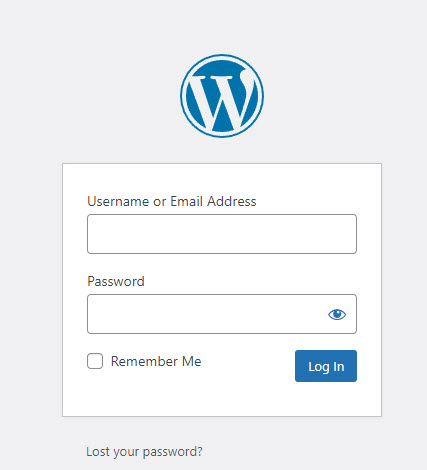
The WordPress Dashboard is the control center for your WordPress site. It contains all the tools and information you need to manage your site.
Use the Email and Password you provided during installation to log in to your WordPress dashboard. If you don’t have a password, use the “Lost your password?” to generate a new password.
Install WP Themes
A WordPress theme is a collection of files that determines the look and feel of your website. It includes the design, layout, colors, typography, and images.
Your new WordPress blog will be installed with a default blog theme that doesn’t look very great.
To install a new WordPress Theme:
Go to Appearance > Themes > Add New in your WordPress dashboard.
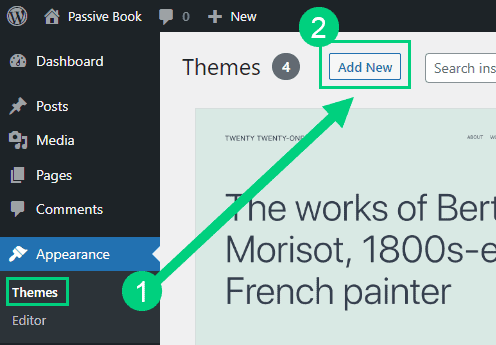
Use the search to find a theme that you like ❶. Before you install the theme, you can see a demo of the theme and learn about its features from the preview screen ❷. If you like the theme, you can install it by clicking the install button ❸. You can also upload a theme from a file on your computer ❹.

Once installed, click the Activate button to enable the theme.
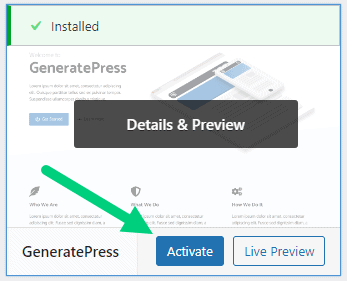
While there are thousands of free themes available, we recommend using a premium theme.
Premium themes not only reduce your website’s load time but also offer unlimited customization possibilities.
We recommend the following premium themes:
While there are themes custom-made for fashion blogs, they tend to be bloated with poor code that slows down your website’s performance. We suggest using one of our recommended themes for a fast website with unlimited customization possibilities.
Install WP Plugins
A WordPress plugin is a piece of software that extends the functionality of WordPress. It can be as simple as adding a contact form to your website or as complex as an e-commerce store.
The WordPress plugin directory has over 55,000 plugins available, with millions more available from third-party websites.
Too many wordpress plugins can slow down your blog site. So before you install new plugins, it will be worth clearing out any existing plugins that your hosting provider installed by default.
Plugins first need to be deactivated before they can be deleted.
❶ Go to WP Admin > Plugins > Installed Plugins
❷ Click on the checkbox to select all plugins.
❸ Select Deactivate from the drop-down.
❹ Click Apply.
❺ Repeat the above steps but select “Delete” instead of “Deactivate” from the dropdown in ❸ to delete all the deactivated plugins.
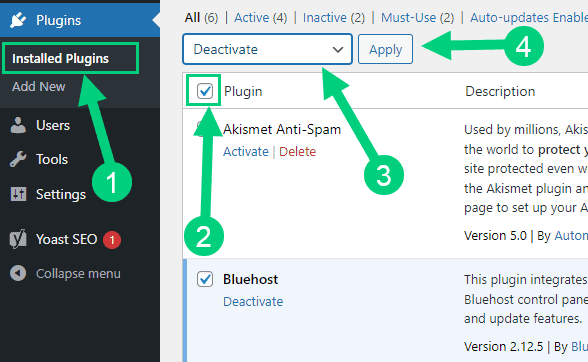
To install new plugins go to the WP Admin > Plugins > Add New.

On the plugins page:
❶ Search for the plugin you want in the search bar
❷ Click Install Now. Once you install the plugin, you must also activate the plugin for it to be enabled.
❸ If you are installing a paid plugin you can upload the plugin instead.
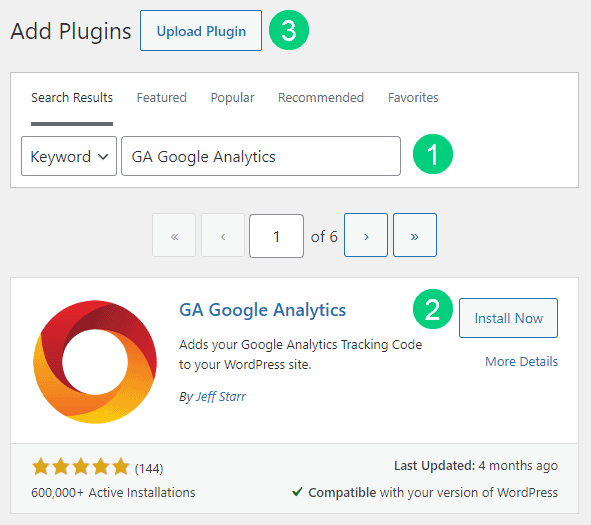
There are many different plugins that you can install, but here are the ones which we recommend:
Backup Plugin
A WordPress Backup Plugin helps you automatically create backups of your WordPress site. This way, if something goes wrong (such as a hack or other issue), you can easily restore your site to its previous state.
Recommended Plugin: WPVivid (paid) or UpdraftPlus (free).
SEO Plugin
These plugins help you optimize your website for search engines. They do this by adding various settings and options to your website that help you improve your website’s rank in search engine results pages (SERPs).
Recommended Plugin: RankMath (paid).
Google Analytics Plugin
A WordPress analytics plugin is a tool that helps you track your website’s traffic and performance. This way, you can see how well your website is performing and what changes you need to make to improve your traffic and conversions.
Recommended Plugin: RankMath (paid) or GA Google Analytics (free).
Cache Plugin
A WordPress Cache Plugin helps improve the performance of your website by caching its content. This way, visitors will see a cached version of your website instead of waiting for it to load all of its content.
Recommended Plugin: WP Rocket (paid).
Page Builder Plugin
A WordPress Page Builder is a plugin that allows you to create custom pages and posts without coding.
Recommended Plugin: Thrive Architect (paid).
Security Plugin
A WordPress Security Plugin helps you secure your website from hackers by offering features such as two-factor authentication, malware scanning, and login lockdown.
Recommended Plugin: Wordfence (free).
Social Media Plugin
A WordPress Social Share Plugin allows you to easily share your website content on social media platforms like Facebook, Twitter, and LinkedIn. You can add social media buttons to your website so visitors can share your content with their friends and followers.
Recommended Plugin: Easy Social Share Buttons (paid).
Customize WordPress
Once you have installed your theme and plugins, it is time to customize the wordpress blog platform:
Change Colors, Fonts & Spacing
You can set the font, colors, and spacing by going to Appearance > Customize in your WordPress dashboard. Premium themes like GeneratePress allow you to customize every aspect of your blog.
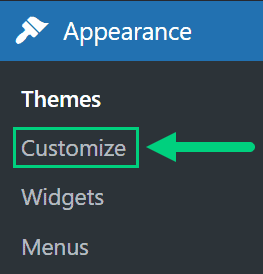
Check out our Blog Fonts & Typography guide to choose the right font and typography settings for your blog.
Add Your Logo
Get a logo designed for your blog from Fiverr. Then set the logo of your blog by going to Appearance > Customize in your WordPress dashboard. A logo is not required for a successful blog but it can definitely help appeal to your target audience.
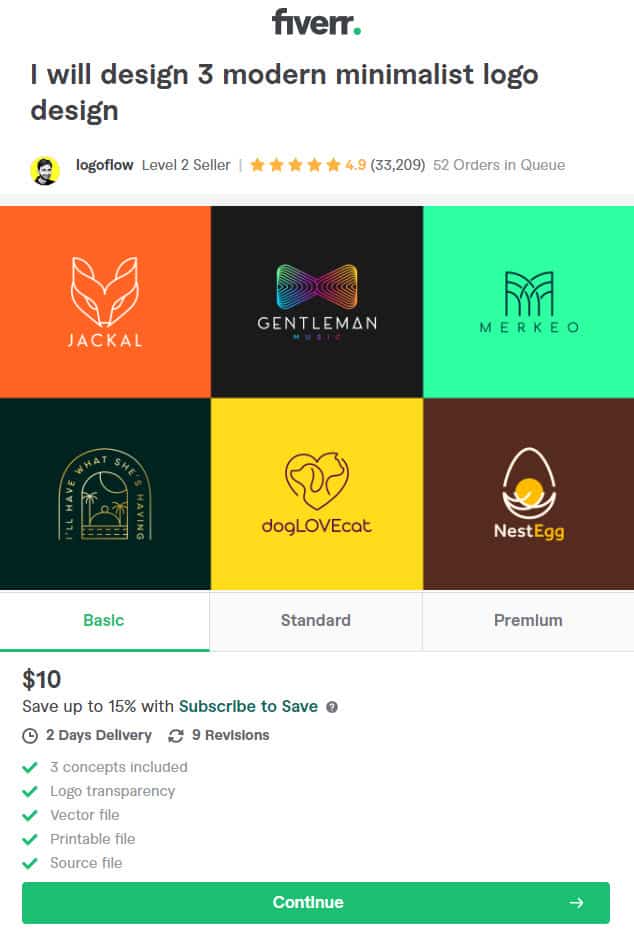
Change Favicon
Favicon is the image that appears in the browser tab and bookmarks. Set the Favicon from the Appearance > Customize section of the WordPress dashboard.

Create Menus
The header and the footer menu can be set from the Appearance > Menus in your WordPress blog dashboard.

You can nest menu items so that it appears as a dropdown menu ❶. You can use the menu as your primary or secondary navigation menu ❷. Don’t forget to save your menu ❸.
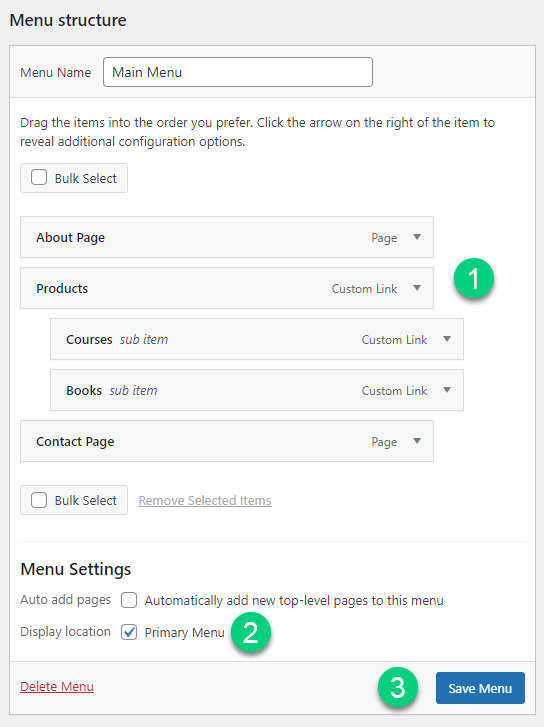
Create Widgets
If you have a sidebar, you can add widgets to it. Go to Appearance > Widgets in your WordPress admin dashboard.
Check out the list of the most useful Blog Widgets and how to add them to your blog.

Set Title & Tag Line
The next step is to change your General Settings. Go to Settings > General in the WordPress Admin area.
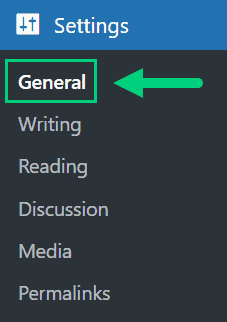
You can set your Site Title, Tagline, and Time Zone from this screen.
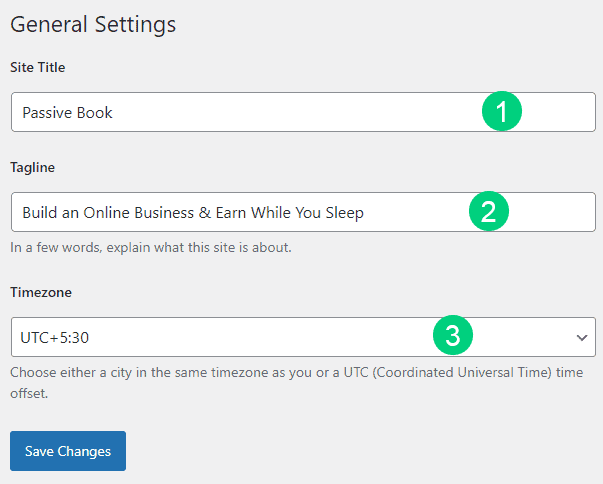
Set Permalinks
The ideal URL structure for SEO is yourdomain.com/sample-post. Set your permalink structure by going to Settings > Permalinks in your WordPress blog dashboard.

Select the “Post name” radio button and save changes.
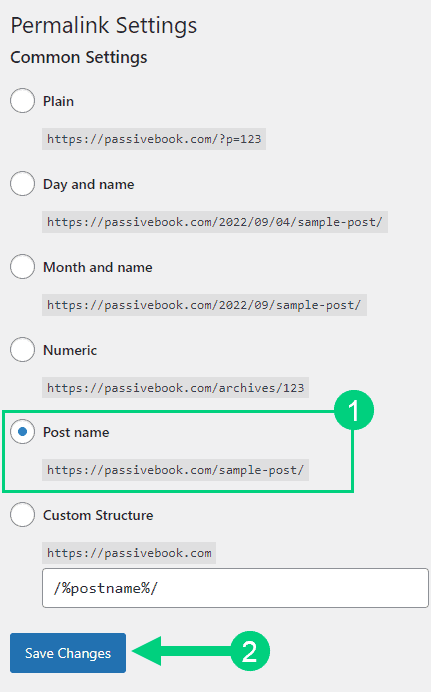
Enable Search Visibility
Chances are you want your blog to show up on Google so people can find you. Go to Settings > Reading in your WordPress dashboard.
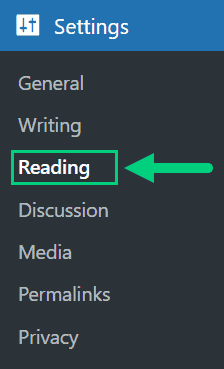
To get search engine traffic, ensure the checkbox “Disable search engines from indexing this site” is Unchecked. You can find this option in Settings > Reading. Most of the time this should be unchecked by default but if it is not, then uncheck it to ensure your site gets traffic from search engines.
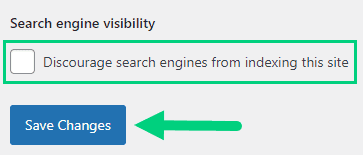
Adjust Comment Settings
Next, you will want to change the Discussion Setting (aka Comments). Go to Settings > Discussion in your WordPress admin area.
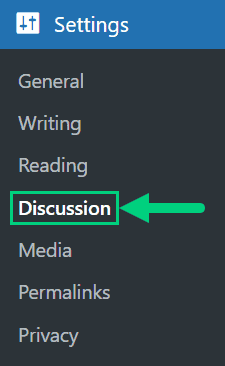
❶ You may want to enable or disable comments on this page. You can also disable pingbacks and enable comment moderation.
❷ You can also set comment approval settings.
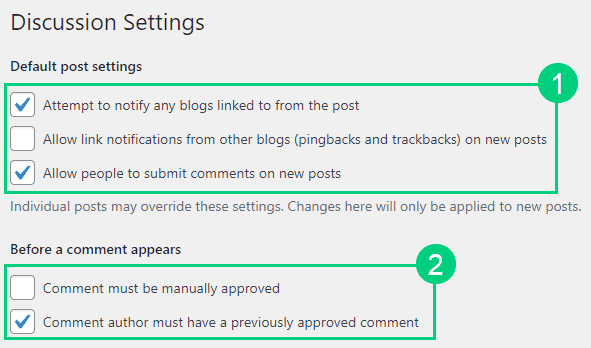
If you want to design your blog further, check out our dedicated guide on blog design which has all our best blog design recommendations.
Create Static Pages
Before you start blogging on your fashion blog, there are a few essential pages you need to create.
Add static content using pages in WordPress. Go to WP Dashboard > Pages > Add New.
- Write the headline of your content.
- Populate the body content
- Click the publish button.

You may want to create the following pages:
Home Page
The home page is the main page of a website that visitors see first. It typically contains a summary of the website’s content and links to other pages.
When creating a home page for your fashion blog, consider including these elements:
- A brief summary of your blog and its content
- Links to your latest blog posts
- Links to your social media profiles
- A contact form or email address
Use a page builder like Thrive Architect to create a professional home page for your fashion blog.
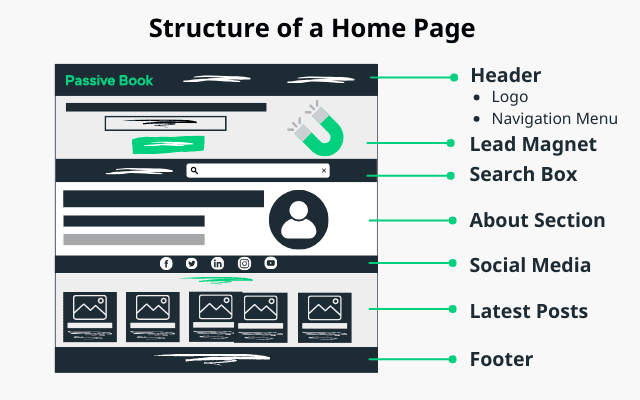
About Page
An about page provides information about a person, business, or organization. The About page typically contains a brief description of the person, business, or organization, as well as links to their social media profiles and website.
When creating an About page for your fashion blog, consider including these elements:
- A brief description of your blog and its content
- Links to your latest blog posts
- Links to your social media profiles
- A contact form or email address
You can create a professional about page for your fashion blog using a page builder like Thrive Architect.

Contact Page
A contact page provides information on how to contact you. The contact page typically contains a mailing address, phone number, email address, and social media profiles.
When creating a contact page for your fashion blog, consider the following:
- Your mailing address
- Your phone number
- Your email address
- Links to your social media profiles
- A contact form
Use contact form plugins like Fluent Forms to create the form on your contact page.
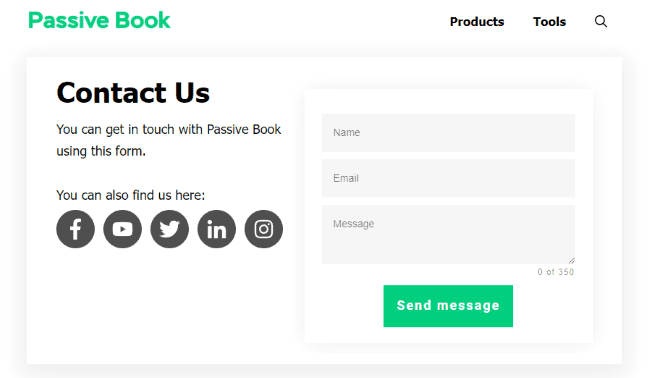
Privacy Policy
A privacy policy page is a web page that contains information about how you collect, use, and disclose personal data.
When creating a privacy policy page for your fashion blog, you should include some of the following elements:
- What personal data is collected
- How the personal data is used
- How the data is disclosed
WordPress generates its own privacy policy for you. But you can also use a tool like Termly to generate your own privacy policy.

Terms of Service
A terms of service page is a web page that contains information about the terms and conditions under which a person or organization provides goods or services. It typically includes information about the rights and responsibilities of both the person or organization providing and receiving the goods or services.
When creating a terms of service page for your fashion blog, you should include some of the following elements:
- Your rights and responsibilities
- The rights and responsibilities of your readers and customers
- How disputes will be resolved
Use a terms & conditions generator like Termly to create it.
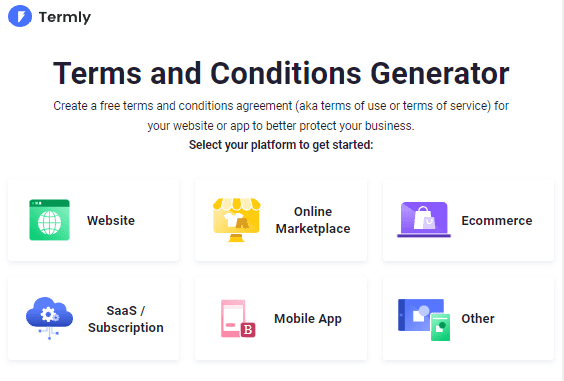
5. Write & Publish Blog Posts
Now that you have your fashion blog set up, it’s time to write and publish your first blog post.
1. Brainstorm Topics
Brainstorm 100 topic ideas for your fashion blog. This will ensure that you always have content to write about.
The goal is to find blog post ideas for your fashion blog that your audience is searching for in Google. The type of content you write on your fashion blog will depend on your specific niche.
Here are a few ways to brainstorm specific content:
Look at Competitors
You can get a lot of inspiration for your blog posts from your competitors. To identify your competitors, you can just Google your keyword and see who is ranking in the search results. Look at the articles your competitors are writing about and then add them to your list.
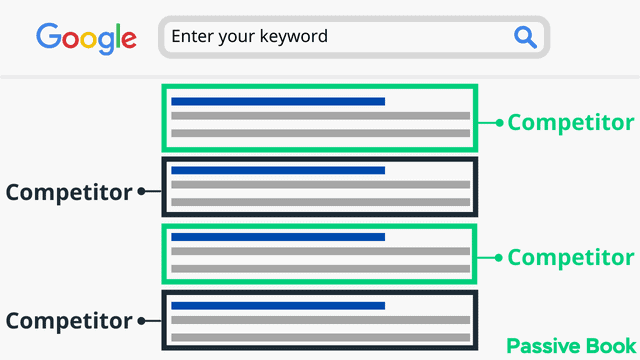
Do Keyword Research
You can use keyword research tools like KeywordTool.io, Ubersuggest or Ahrefs, or Google Keyword Planner to help you find content ideas that people are actually searching for in Google. Just plug your keyword into your search bar to get other relevant keywords on the topic.

Community & Forums
You can find a lot of content ideas from communities and forums. There are many fashion communities and forums online where people discuss different topics related to fashion. You can use sites like Reddit, Quora, or fashion Facebook Groups to find content ideas for your blog posts.
2. Create an Editorial Calendar
Now that you have a list of content ideas, it’s time to create an editorial calendar. This will help you organize and plan your blog posts. Your editorial calendar will ensure you always have content to write and you never run out of ideas.
Download Content Calendar Template

Steal our exclusive content calendar template. Have it delivered directly to your inbox:
Your editorial calendar should include the following information:
- The title of your blog post
- The keyword you are targeting
- A brief summary of the article
- The date you plan to publish your article.
You can create your editorial calendar in Google Sheets, Trello, Asana, or Notion.
3. Write a Blog Post
Once you have your editorial calendar set up, it’s time to start writing your blog post. For more information, check out our in-depth guide on How to Write A Blog Post. Here we will go over specific tips for a fashion blog.
Outfit Posts
Outfit posts are blog posts where the blogger showcases their latest outfits and provides details about where they got each item.
Here are a few examples:
- “5 Ways to Wear a Little Black Dress”
- “Springtime Outfit Ideas”
- “Casual Friday Outfits”
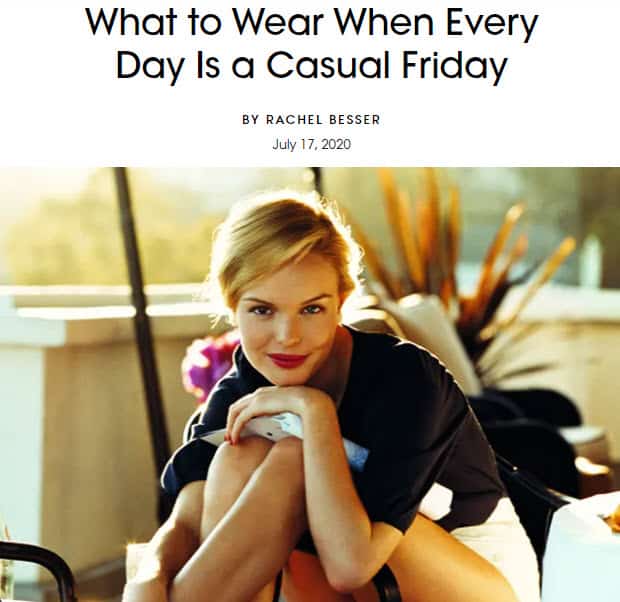
When writing outfit posts, include clear, well-lit photos of your outfits from different angles. Provide links to where your readers can purchase similar items or give tips on how they can recreate the look with items they already own.
Fashion Trends
Trend roundups are blog posts that discuss the latest fashion trends and provide tips on how to incorporate them into your wardrobe.
Here are a few examples:
- “10 Trendy Pieces to Add to Your Wardrobe This Season”
- “How to Wear the Latest Color Trends”
- “5 Street Style Trends to Try Now”
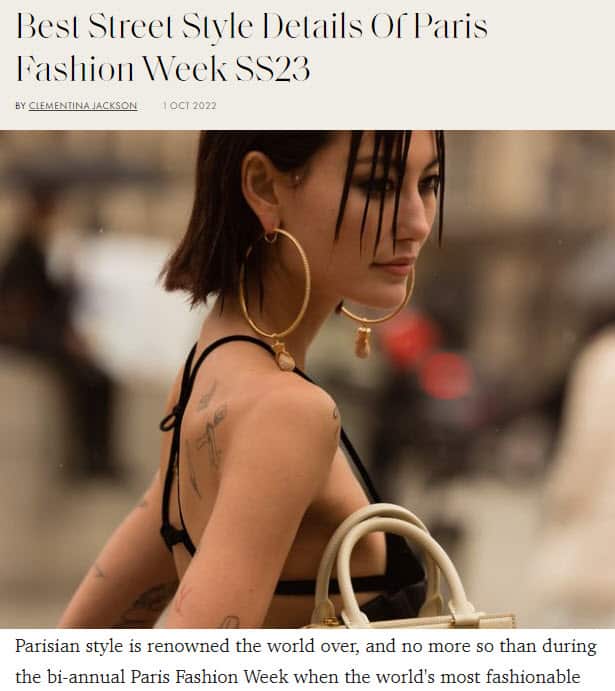
To write about fashion trends, start by researching what the current fashion trends are. You can do this by reading fashion magazines, watching fashion shows, or checking out street-style blogs. Once you know what the current trends are, you can start writing your blog post.
Keep your audience in mind and choose trends that will appeal to them. Be sure to provide plenty of examples and images to illustrate your points.
Some ideas for writing about fashion trends include:
- How to style a certain trend
- How to wear a certain trend
- How to mix and match different trends
- What trends will be popular in the upcoming season
Fashion Lookbooks
Lookbooks are collections of outfits put together around a particular theme. They can showcase your personal style and give your readers inspiration for their own outfits.
Here are a few examples:
- “Winter Wonderland Lookbook”
- “Vacation Style Lookbook”
- “Date Night Lookbook”
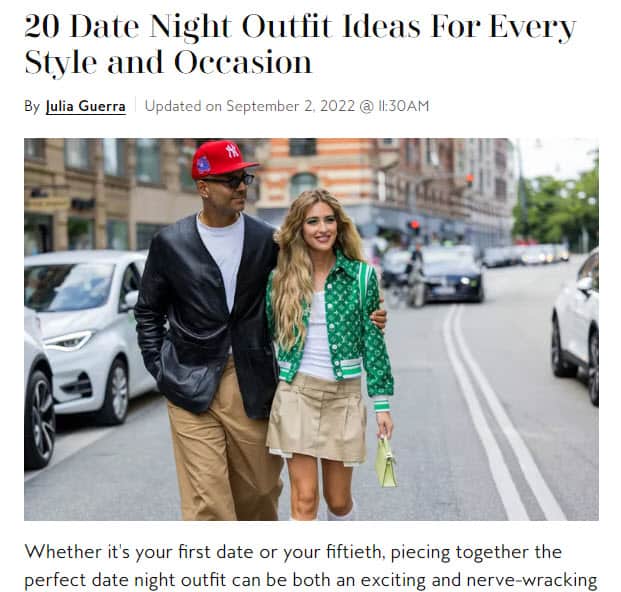
When creating lookbooks, choose a specific theme or color scheme to tie your outfits together. Be sure to provide clear, well-lit photos of each outfit and include details about where each item can be purchased.
Shopping Guides
Shopping guides are blog posts that provide recommendations for where to shop for specific items or how to find the best deals.
Example blog post titles:
- “Where to Shop for the Best Jeans”
- “The Best Online Stores for Plus-Size Fashion”
- “How to Score Designer Deals”

When writing shopping guides, it can be helpful to include a mix of high-end and budget-friendly options. Be sure to do your research and provide your readers with a variety of options to choose from. It can also be helpful to include tips on how to shop sustainably or find the best deals.
Beauty & Grooming Posts
Blog posts about beauty and grooming discuss products and techniques for personal care. Fashion and beauty are often related, so consider including posts about personal care products and techniques.
Here are a few examples:
- “The Best Skincare Products for Dry Skin”
- “5 Easy Hairstyles for Summer”
- “The Best Nail Polishes for a Pop of Color”

When writing about beauty and grooming, it’s important to do your research and choose products that have been well-reviewed and are suitable for your audience. Include detailed descriptions and usage instructions, along with clear, well-lit photos.
Fashion Reviews
Fashion reviews are blog posts in which you share your thoughts on fashion products, such as a piece of clothing, accessory, or beauty product.
Here are a few examples:
- “Reviewing the Latest It-Bag”
- “My Thoughts on the Newest Beauty Launch”
- “A Wearability Test for These Trendy Shoes”
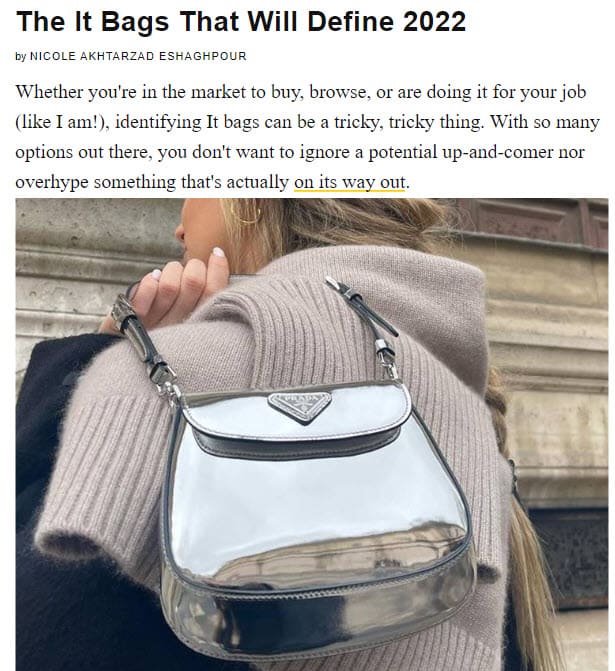
When writing fashion reviews, it’s important, to be honest and provide detailed feedback about the items. Include plenty of photos and provide information about where the item can be purchased. Consider your audience’s needs and preferences when writing fashion reviews.
If you want to write fashion reviews, you can start by writing about your own personal experiences with different clothing brands or stores. You can also write reviews of products that you have used.
Some ideas for writing fashion reviews could be:
- Reviews of clothing stores or brands
- Reviews of online stores or apps
- Reviews of different types of clothing
- Reviews of fashion accessories
Fashion Wishlist
In fashion wishlists, you share a list of items that you are currently coveting or hoping to purchase in the future.
Here are a few examples:
- “My Current Wishlist”
- “The Items I’m Saving Up For”
- “Dreaming of These Luxury Pieces”
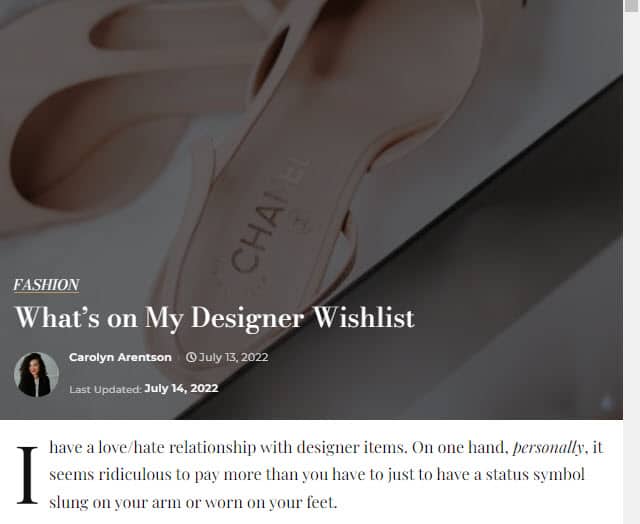
Choose items that align with your style and audience interests when creating a fashion wishlist. Be sure to include plenty of photos and provide information about where the items can be purchased. You may also want to include some commentary about why you are interested in each item and how you envision incorporating it into your wardrobe.
You can start by brainstorming a list of items that you would like to have. This could be a list of clothing, accessories, shoes, or anything else related to fashion.
Some ideas for writing a fashion wish list could be:
- A list of must-have items for your wardrobe
- A list of items you would like to splurge on
- A list of affordable fashion finds
A fashion wish list will give you plenty of opportunities to plugin your affiliate links.
Lifestyle & Personal Style Posts
Lifestyle and personal style posts give readers a glimpse into your life and the things that inspire your fashion choices.
Here are a few examples:
- “A Day in the Life of a Fashion Blogger”
- “My Personal Style Evolution”
- “The Things That Inspire My Fashion Choices”
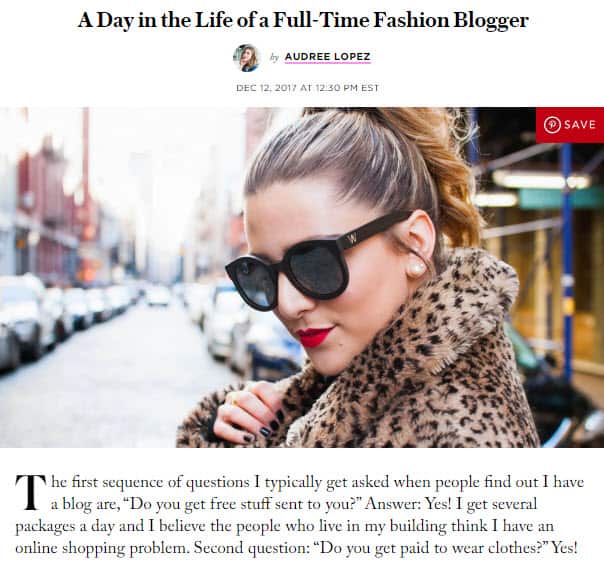
When writing about your lifestyle and personal style, it can be helpful to include plenty of personal anecdotes and photos to give your readers a sense of who you are. Focus on the unique aspects of your style and provide actionable takeaways for your readers to apply to their own lives.
Write 5x Faster With AI
You can write your new blog post at 5x speed using the AI writing software Jasper. I was able to write over a hundred blog articles in 3 months using Jasper. This blog article you are reading right now was written with the help of Jasper. AI will not only help you write blog posts fast but also with higher quality.
Jasper can write plagiarism-free blog content, articles, social media content, emails, and ad copy. All you have to do is provide a few inputs on what you want and Jasper will do all the hard work of creating the blog content for you. No more writer’s block.
Check out the video below to see Jasper in action:
Try Jasper for free using the links on this page and get 10,000 bonus credits you can use to start writing your first articles.
Once you sign up for Jasper I recommend you spend some time going through the tutorial videos in the Jasper Bootcamp to truly unlock the power of this amazing software.
Check out our guide on How to Write a Blog Post Fast in 15 mins Without Losing Quality for more tips to write fast.
Outsource Writing
If you don’t want to write the articles yourself, consider outsourcing to a freelance writer. There are many sites where you can find freelance writers, such as Fiverr, Upwork, or Freelancer.

When hiring a freelance writer, be sure to:
- Check their portfolio
- Read their reviews
- Ask for a writing sample
- Get a sense of their writing style
Be clear about your expectations before hiring someone. The last thing you want is to receive a poorly written article that doesn’t meet your expectations.
4. Add Images
After you have written your blog post, it’s time to add images. Images are a great way to break up your text and make your blog posts more visually appealing.
Capture your own images if you have a camera. If you don’t have a camera or if you’re not confident in your photography skills, you can find free stock photos online.
There are many sites where you can find free stock photos, such as:
Free Options: Pixabay, Pexels, Upsplash
Paid Options: Deposit Photos, Shutterstock, iStock, Getty Images, 123rf.
Use keywords relevant to your blog post when searching for images to ensure relevance.
You can edit your images in Canva. If you get Canva Pro, you will have access to even more tools and features, not to mention unlimited access to a million stock photos.
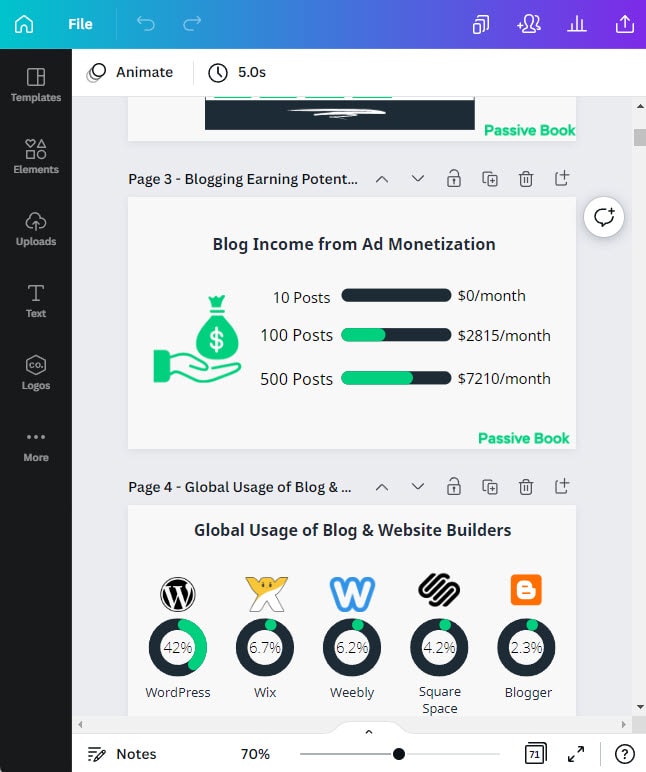
6. Promote Your Fashion Blog
After publishing your blog post, it’s time to start promoting it to drive blog traffic.
There are many ways you can promote your blog posts. We will cover the popular methods here:
Search Engine Optimization (SEO)
The first step to promoting your blog post is to make sure it is SEO friendly. Factors that make a blog post SEO friendly include:
- Using the right keyword
- Adding images and infographics
- Using external links
- Internal linking
- Making sure your blog post is mobile friendly
Many factors go into SEO, and it can be a bit confusing to figure out where to start. You can master the more advanced SEO tactics by checking out our SEO Resources.
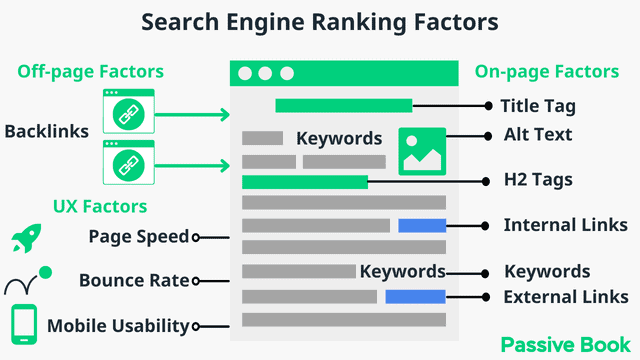
You can ensure you get the basics of SEO right, by completing the recommendations given by the RankMath plugin.
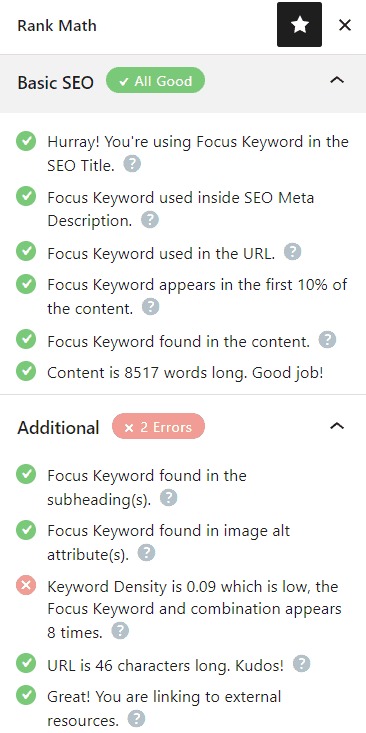
Email Marketing
If you have an email list, you can promote your blog post to your subscribers. Start collecting your reader’s email address by creating opt-in forms. You can then connect your opt-in forms to an email marketing software to send out the email.
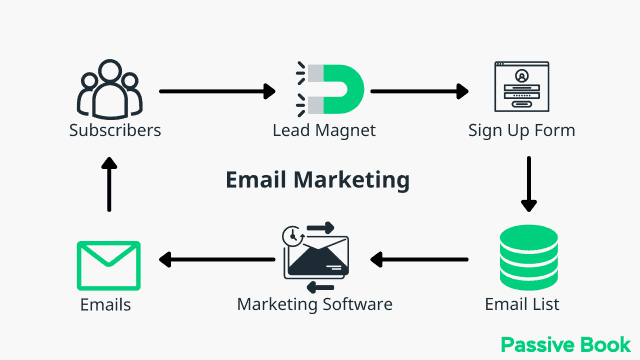
You can use the Thrive Leads plugin to build opt-in forms to collect email addresses. You can then connect the opt-in form to an email marketing service like Active Campaign to send out the emails.
Check out our Email Marketing resources to learn more.
Social Media Marketing
Social media is a great way to reach new people and promote your blog post. The best part about social media marketing is that it’s free.
There are many social media platforms you can use to promote your blog posts. But fashion blogs do extremely well on Pinterest and Instagram.
When promoting your blog post on social media, ensure that you:
- Use high-quality images
- Write engaging captions
- Include a call-to-action
Guest blogging
Guest blogging is when you write a blog post for another person’s blog. This is a great way to reach new people and grow your audience. You will also be able to build links to your fashion blog that has SEO benefits. You can promote your blog in the author bio.
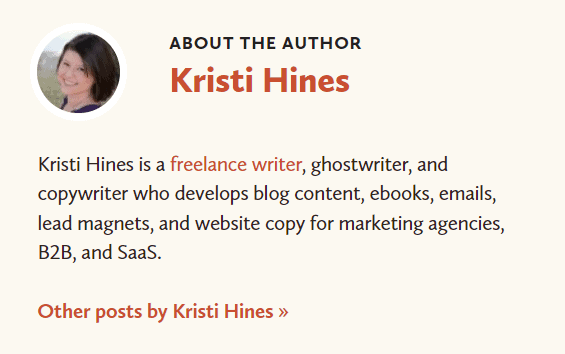
Blog Comments
Blog comments are when you leave a comment on someone else’s blog post. This is a great way to start a conversation with other bloggers and get people interested in what you have to say. Just make sure your comments are relevant and add value to the discussion.
7. Monetize & Make Money
After starting a fashion blog and getting traffic, you can think of monetizing it to make money from your blog.
There are many ways fashion bloggers make money from their blogs. We will cover the most popular methods here:
Advertising
If you have a lot of traffic to your fashion blog, you can display ads on your site. Advertisers will pay you to put their banner ads on your website.
To start advertising on your blog, you can sign up for an ad network like Ezoic (they pay more than Google Adsense). When your blog starts getting more than 100,000 page views a month you can monetize with Adthrive.
| Ad Network | Earnings Per 1K Impressions (EPM) | Monthly Traffic Requirement |
|---|---|---|
| Ad Thrive | $13 | 100,000 |
| Ezoic | $3 | 10,000 |
| Media.net | $1 | – |
| Google Adsense | $1 | – |
Affiliate Marketing
Affiliate marketing is when you promote other people’s products or services on your blog and earn a commission when someone buys through your affiliate link.
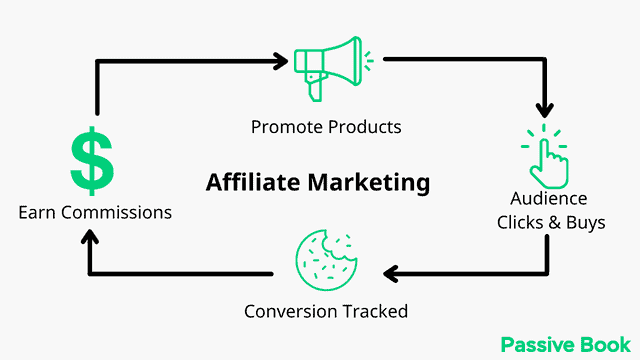
For instance, if you have a fashion blog, you can sign up for an affiliate program with a clothing retailer like Nordstrom or Macy’s.
You can promote their clothes on your blog and earn a commission when someone buys through your affiliate link.
Digital Products
If you have knowledge or expertise in a particular area, you can create digital products like e-books, courses, or templates and sell them on your blog.
For instance, if you are good at DIY fashion, you can create a course teaching people how to make their own clothes.
You can use Teachable if you want to sell video courses. Your students will have a dedicated course members area and a community system to ask questions and interact with each other. If you only want to sell eBooks, you can use SendOwl which lets you sell your digital products and eBooks for free.

Sell Services
If you have a skill or expertise that people are willing to pay for, you can sell services on your blog.
For example, if you are a well-known fashion blogger, you can become a fashion consultant.
Physical Products
If you have your own products, you can sell them on your blog. For example, if you have a fashion blog, you can sell clothes that you design yourself. You can use the Woocommerce plugin to sell your clothes directly on your Wordpress website or link them to a marketplace like Etsy.
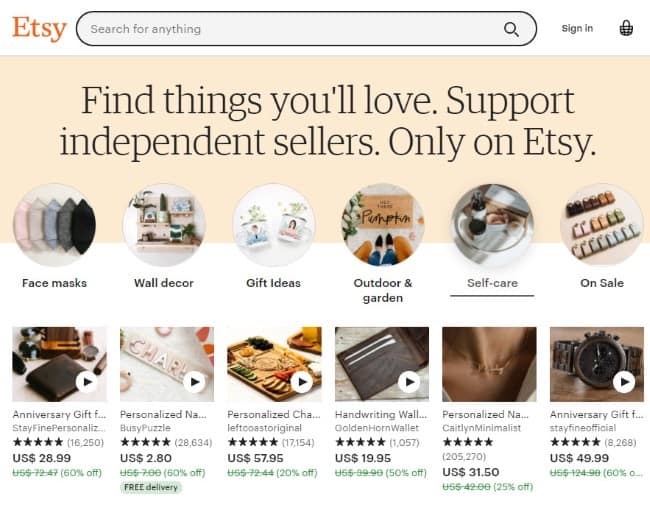
Sponsored Posts
Companies may pay you to write about their products or services on your blog. These are called sponsored posts.
For example, if you have a fashion blog, a clothing company may pay you to write a review of their latest collection.
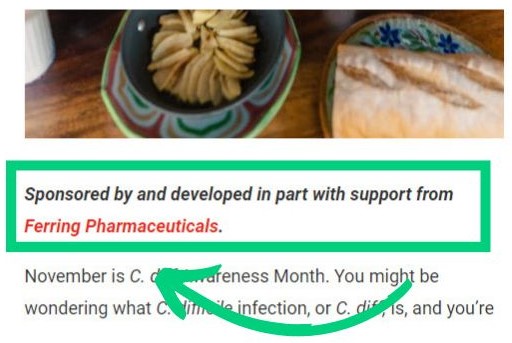
FAQ
Here are a few frequently asked questions:
Do fashion bloggers get paid?
Yes, fashion bloggers can get paid in several ways, including selling advertising space, affiliate marketing, selling digital products, and sponsored posts.
What do you write in a fashion blog?
Topics you can write about in a fashion blog include the latest fashion trends, how to style particular items of clothing, where to buy affordable clothes and more.
How often should I post on my fashion blog?
How often you post on your fashion blog is up to you, but it’s generally a good idea to post at least once a week to keep your readers engaged.
What do I need to start a fashion blog?
First, you need to choose a blogging platform like WordPress and a web host to get your blog online. Then, you need to select a fashion blog theme to make your blog look professional and attractive.
How can I monetize my fashion blog?
There are several ways to monetize your blog. You can use affiliate marketing to earn a commission on products you recommend, work with fashion brands on sponsored content, offer advertising space on your blog, or create and sell your own products or services.
What is the best blogging platform for a fashion blog?
WordPress is one of the top blogging platforms for fashion bloggers and influencers. It is easy to use, has tons of themes and plugins specifically designed for fashion blogs, and offers great SEO optimization for your content.
How do I optimize my fashion blog for search engines?
You can optimize your blog by using relevant keywords in your content and meta descriptions, optimizing your images, and creating quality backlinks to your blog. Utilizing SEO plugins can also help you optimize your blog for search engines.
How do I make my blog successful and make money?
You need to create quality content consistently, actively engage with your audience, and develop partnerships with brands and other bloggers. You can also offer valuable resources and content to your readers, such as product reviews, style guides, and expert advice.
How do I find fashion products and brands to work with?
You can search for fashion products and brands on social media, at fashion exhibitions, and by networking with other bloggers and industry professionals. Many brands also have affiliate programs that you can join to earn commissions on their products.
What is the best way to earn money from my fashion blog?
There are many ways to earn money from your blog, such as affiliate marketing, sponsored content, advertising, and selling your own products or services. Experiment with different methods to find what works best for you and your audience.
Can I start a successful fashion blog in 2025?
Absolutely! Fashion is constantly evolving, and there is always room in the market for new voices and perspectives. By offering unique and valuable content and staying up-to-date with industry trends, you can create a successful fashion blog in any year.
Do I need to be a fashion expert to start a fashion blog?
While it certainly helps to have a strong knowledge of the fashion world, it is not necessary to be a fashion expert to start a fashion blog. As long as you are passionate about fashion and style and willing to learn and experiment, you can create a successful and engaging fashion blog.
What Next?
You are now ready to become a fashion blogger.
If you have any questions as you set up your new blog, leave a comment below and we’ll be happy to help.
Starting a successful fashion blog is a great way to share your passion for fashion and connect with like-minded people. And, with the right strategies, you can even make money from your fashion blog.
So, if you’re ready to start a fashion blog, follow the steps in this guide and you’ll be on your way to success.
Have you started your fashion blog yet? What type of fashion blog are you going to start? Let us know in the comments below.
Share this post with your friends & followers:
